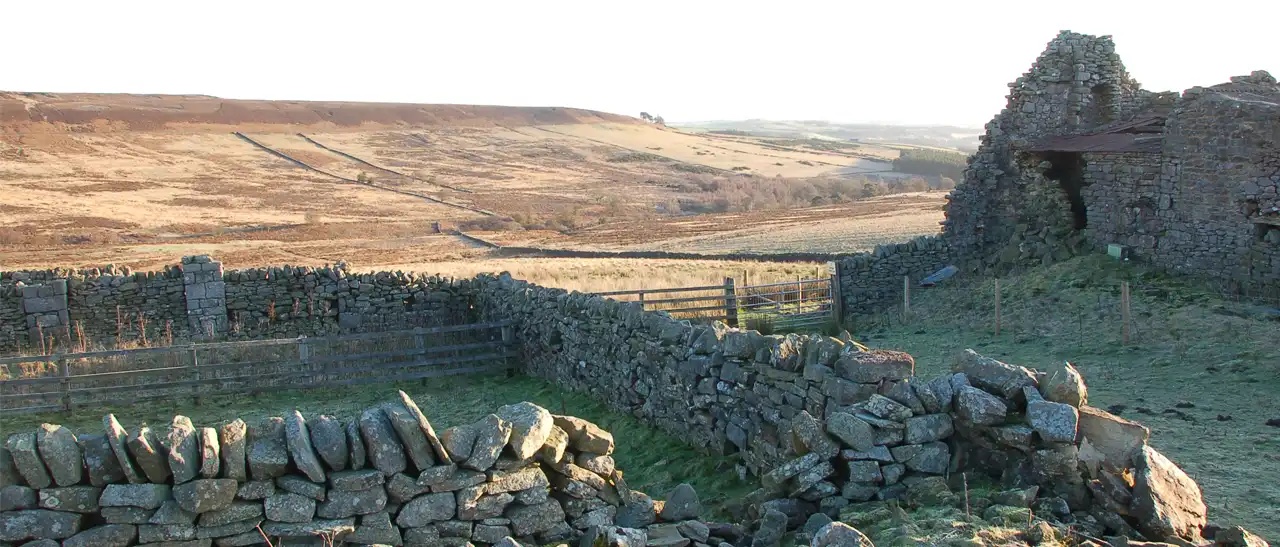How We Do It
- Home
- How We Do It

Upland Management Methods
Rush Cutting
Soft rush can be a valuable cover plant in any habitat, however, when it becomes too dense it can also lead to poorer habitat for many other species.
Small areas are cut outside the bird breeding season to create open spaces for chicks and adults both to feed, and dry off when the remainder of the vegetation is very wet. If these areas are cut on a regular basis the rush cover tends to decrease year on year.
Heather Burning / Cutting
This practice is carried out when the heather canopy reaches a certain height and more or less becomes a mono culture. At that stage certain species are disadvantaged, especially the wading birds, and small areas are burnt or cut to create open spaces, which wading birds will use as nest sites, and which are exploited by a host of other species. It is also important for the grazing animals as new vegetation is created for them to utilize.
Burning is not harmful to the peat or the seed bank if done under the correct conditions and within the burning code. Cutting does use carbon in the shape of fossil fuel but it is necessary to maximize the potential of the site for all species. All work is done outside the bird breeding season.
Wader Scrapes / Ponds
These small shallow areas, 2 meters or so, are created with the use of a shallow digger bucket for the benefit of the wading birds on the sites. Standing water is important, as even in the Pennines it can become dry. The shallow water and the wet mud edges provide ample feeding and bathing areas for birds like snipe, curlew, lapwing, woodcock and others. They are also a boost for amphibians which make their homes in them, as evidenced by the quantity of tadpoles. Once again the cleaning out, creation of these is done outside the breeding season.
Tree Planting
The Trust has planted thousands of trees and shrubs, many in conjuction with the Woodland Trust to add diversity to the sites. The trees are used by many bird species both for nesting sites and food during the winter months. The black grouse is one of the main beneficiaries of the tree planting as it feeds on the fruit and buds of many of the species which have been planted.
Bracken Control
Rather like soft rush bracken in some circumstances may be beneficial, it is a very invasive plant which smothers most other species. It is controlled by weed wipe or spray, at specified times of the year and under licence. It can also be kept in check in some areas by suitable tree planting which in turn and time smother the bracken by shading it out.
Managed Livestock Grazing
The Reserves support a variety of birds, insects and reptiles, some of which are very vulnerable and all of which require a diversity of habitat. Managed livestock grazing is vital for maintaining species rich habitats and providing a mosaic of sward to suit the variety of wildlife.
The numbers and types of livestock together with timing of grazing are managed by the Trust and local graziers to ensure optimal environmental benefit. Overgrazing results in damaged habitat with close cropped grasses replacing the rich mosaic of upland plants, in turn leading to soil erosion and poor water quality as well as reducing the diversity of habitat species.
Dry Stone Walling / Fencing
Part of the upland heritage, dry stone walls were the original field boundaries using local materials and are a feature of the moorland landscape. They provide effective boundaries for grazing livestock as well as shelter in the winter and shade in the summer. As dry stone walls are self draining they are less liable to damage from frost and harsh weather and last for generations. The walls maintain their own ecosystem with lichens, mosses and other plant life as well as being a valuable habitat for insects and spiders while damp recesses are enjoyed by slugs and snails. Toads, frogs and adders use the walls as their winter homes while field voles, mice and rabbits often use the walls as hiding places from predators.
Fencing on the reserves needs to be strong to withstand livestock damage and to protect newly planted trees from being eaten or damaged. Where possible fencing repairs are carried out outside the bird nesting season to avoid disruption.
Public Access
Lintzgarth and Thornhope are carefully managed for wildlife and habitat conservation and are both in isolated locations with limited access. However to facilitate public access the Trust will arrange site visits with a warden. If this is of interest please contact enquiries@philipwayreuplandtrust.co.uk.
There are two footpaths which cross Lintzgarth and can be accessed by the public. Dogs must be kept under control so as not to create a disturbance to the surrounding wildlife. Some areas on both reserves are open access with dog restrictions in place during the bird nesting season. There are information maps at access points on both sites.
The Trust would be grateful if anyone using the public footpaths takes care not to damage the habitat or disturb the surrounding wildlife. If you are interested in upland conservation we look forward to hearing from you.
Predator Control
All the science on predator control in the uplands shows it is very important to keep numbers of certain predators in check if waders and other birds, including black grouse, are to flourish.
The Trust has a legal trapping regime in place to achieve those ends and our wader and black grouse numbers are testament to the work done.
